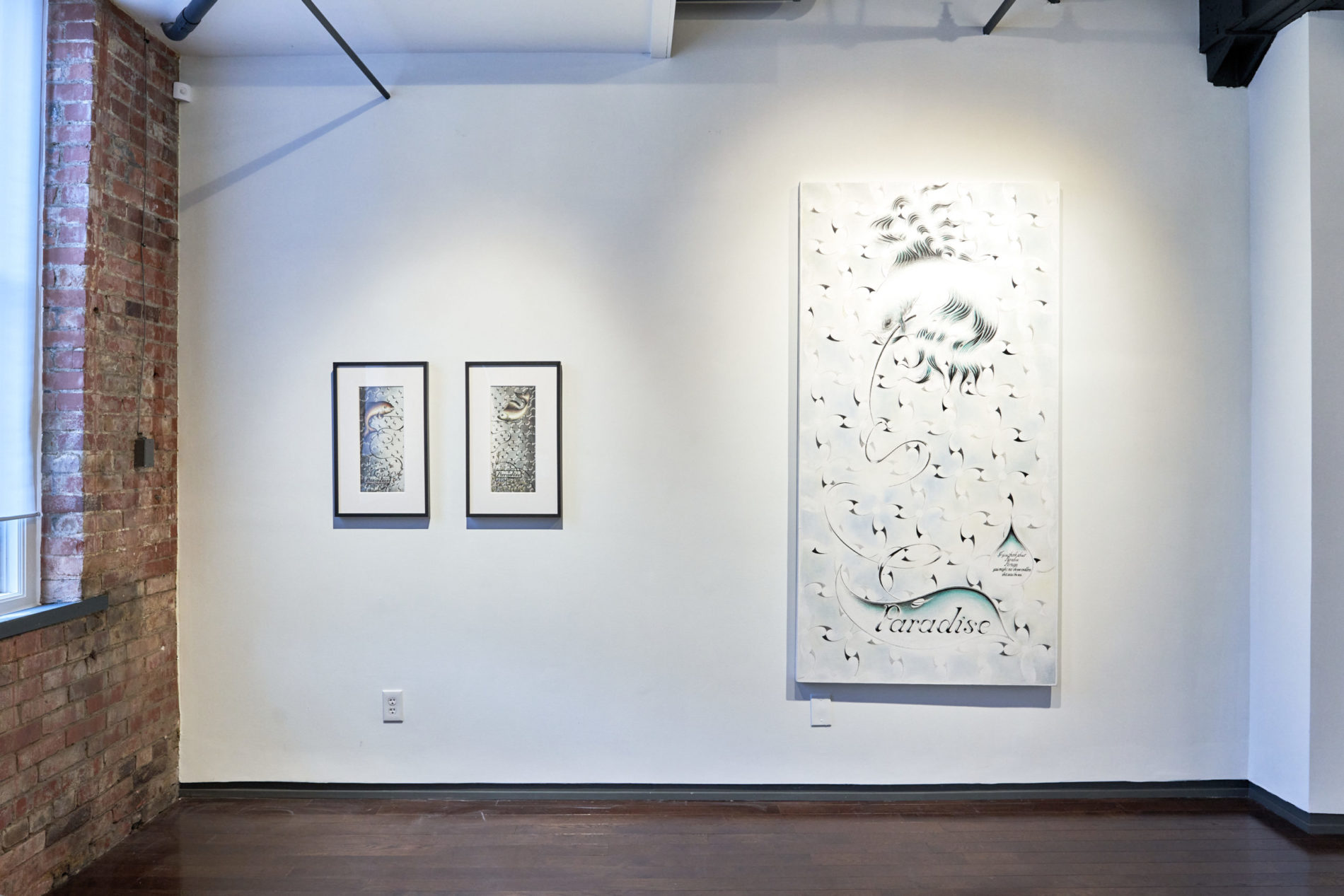3/6/2021
Drawings and Paintings
Lynton Wells
Final Week

In this work Wells leaves the viewer with a light and airy feel. At first glance the paintings looks airbrushed, however they are raw pigments lightly distributed around the canvas. Subtractive streaks of light coming through the painting leave a powerful undercurrent of electricity. The cord wrapping around the painting also reminds us of Wells’ study of the natural world conflicting with the man made world. It looks as if the tree is being plugged into the wall, electrifying the entire painting. Light is often associated with an idea or thought and Wells’ work invites us to ponder the conditions of the outside world in comparison to the inside world.

January 15 2120, is one of Wells’ more direct paintings. As the flowing fins of the fish remind the viewer of nature’s beauty, the fishing line draws our eye to a tear shape that contains the quote: “If you think about paradise perhaps you might not throw endless shit into the sea.” At the bottom of the painting the fish has hooked an object that reads “Paradise”. These quotes confront the viewer in a powerful way. Nature is full of beauty that humans take for granted. Society constantly looks to the future and how to attain perfection or get to paradise instead of taking care of the here and now. Wells seems to be telling us paradise can be found if only you would open your eyes and protect what is precious.

Return to Sender
Laura Larson
November 19, 2020 – February 21, 2021
Return to Sender emerged through a collaborative mail exchange between Larson and Silver that began in the early months of the COVID-19 stay-at-home order in Ohio. Each artist would make a work in reply to one received. From this looping call and response, a collection of small works grew—a living document of the pandemic embodying the experiences of loss, sorrow, vulnerability, and rage. This exchange acts as the generative center of the exhibition. Every two weeks, the artists will take turns re-installing the show: adding and subtracting works produced through their correspondence and creating new ones in response to the developing relationships in the gallery.




